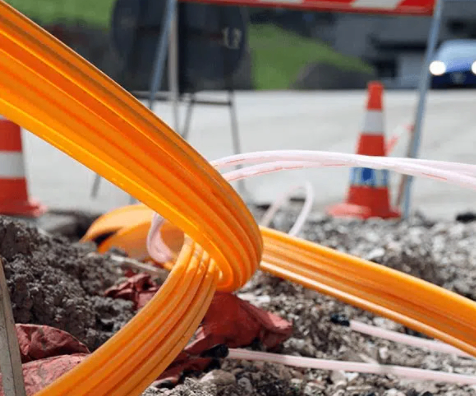Oufu Optical Fiber Cable Co.,Ltd
Address: Shenyang, Liaoning, China
Contact person: Manager Zhang
Phone: 400-964-1314
Mobile phone: +86 13904053308
【whatsapp && wechat】
2024-10-22 1528
Understanding Fiber Cable Drop Bend
Fiber cable drop bend refers to the sagging or downward bending of a fiber cable due to gravity or improper installation practices. This sagging can create tight bends in the cable, which can exceed the cable's minimum bending radius—a critical specification that defines the smallest radius a fiber cable can be bent without causing damage or performance degradation.
www.adsscable.cn

When a fiber cable is bent beyond its minimum bending radius, it can lead to several issues, including:www.adsscable.cn
Signal Attenuation: Bends can cause microbending losses, which reduce the strength of the optical signal transmitted through the fiber.
Increased Fiber Breakage Risk: Tight bends can weaken the fiber structure, increasing the likelihood of fiber breakage or damage during installation or over time.
www.adsscable.cn
Performance Degradation: Over time, repeated bending can lead to permanent damage to the fiber, resulting in decreased performance and increased maintenance costs.
Solving Installation Challenges
To address the challenges associated with fiber cable drop bend, installers and network administrators can adopt the following best practices:
Proper Support Structures: Use proper support structures, such as hangers, brackets, or cable trays, to support the fiber cable along its entire length. Ensure that these supports are evenly spaced to prevent sagging and excessive bending.
Adherence to Minimum Bending Radius: Always refer to the manufacturer's specifications for the minimum bending radius of the fiber cable being installed. Use bend radius control devices or tools to ensure that bends do not exceed this limit.
Installation Techniques: Employ proper installation techniques, such as using gentle curves and avoiding sharp bends. When routing cables, avoid areas where they may be subjected to excessive force or strain.
Inspection and Testing: Regularly inspect fiber cables for signs of sagging, bending, or damage. Conduct performance tests to ensure that the fiber cables are operating within specifications and to detect any potential issues early.
Training and Education: Provide training and education to installers and network administrators on the importance of proper fiber cable installation practices. This will help to ensure that they are aware of the potential issues associated with drop bend and are equipped with the knowledge and skills to avoid them.
Conclusion
Fiber cable drop bend is a common challenge in fiber optic networking that can significantly impact the performance and lifespan of fiber cables. By understanding the causes and effects of drop bend and adopting best practices for installation, installers and network administrators can overcome these challenges and ensure the integrity and performance of their fiber optic networks. By prioritizing proper support structures, adherence to minimum bending radius specifications, proper installation techniques, regular inspection and testing, and training and education, they can minimize the risk of fiber cable damage and optimize network performance.